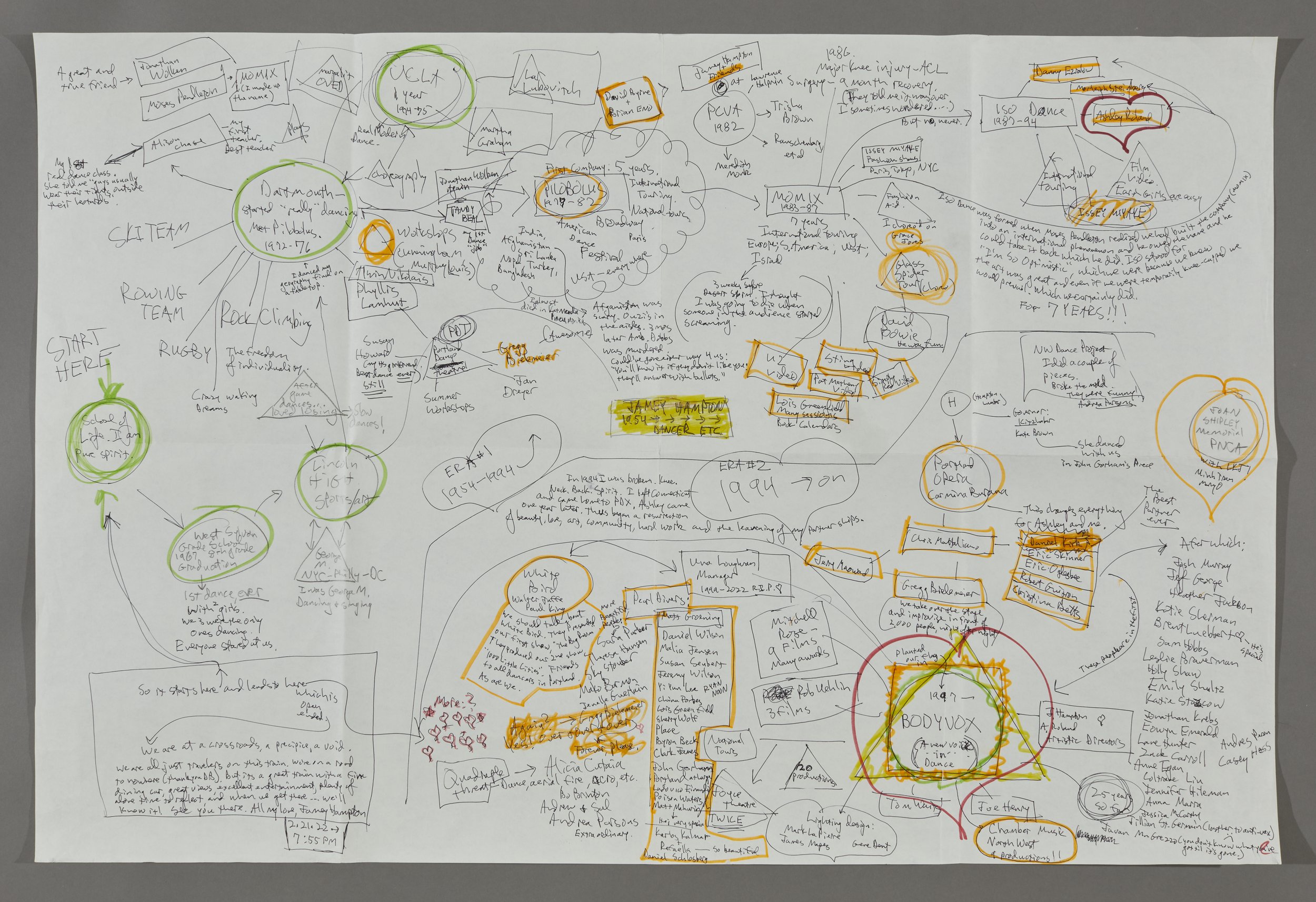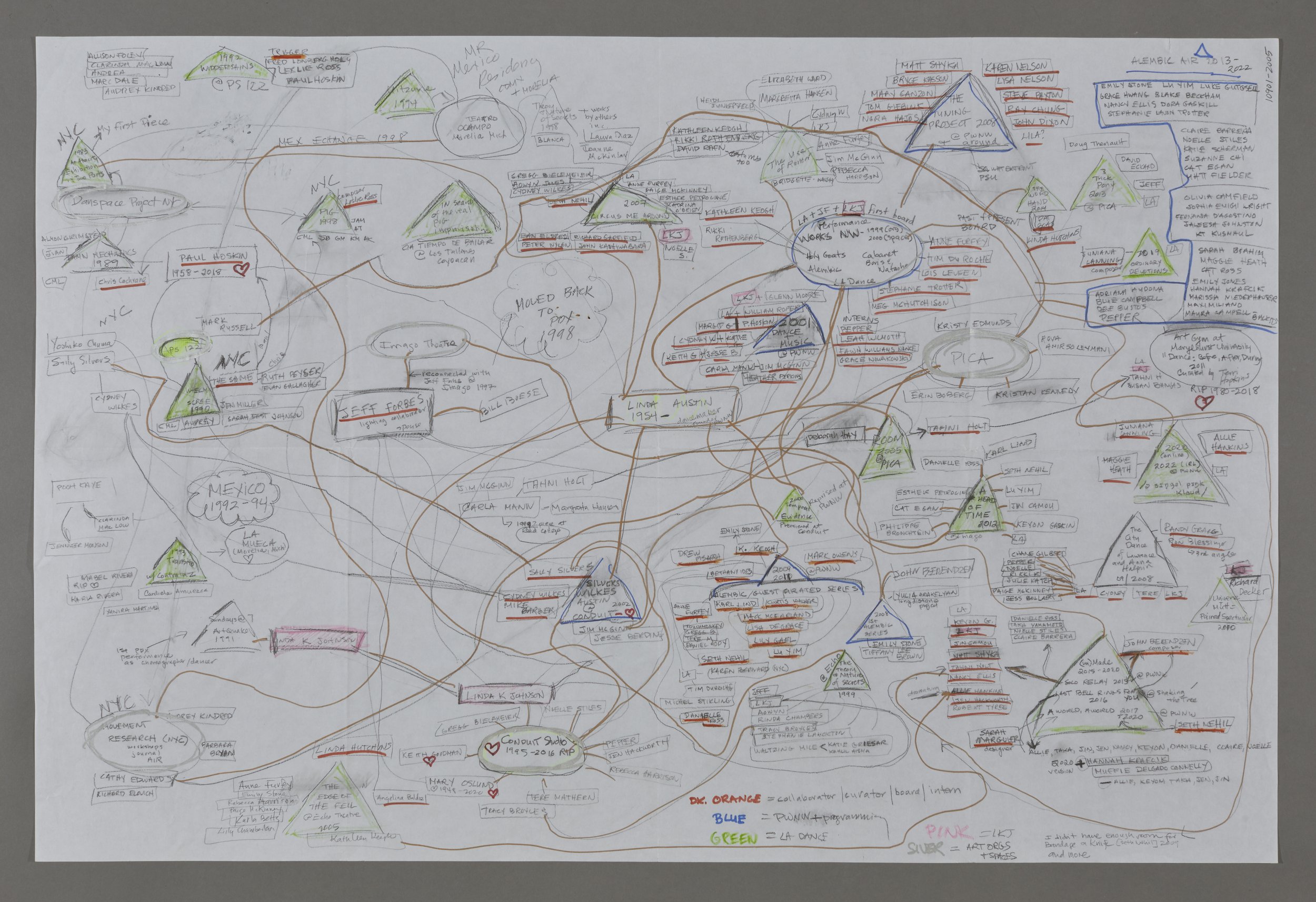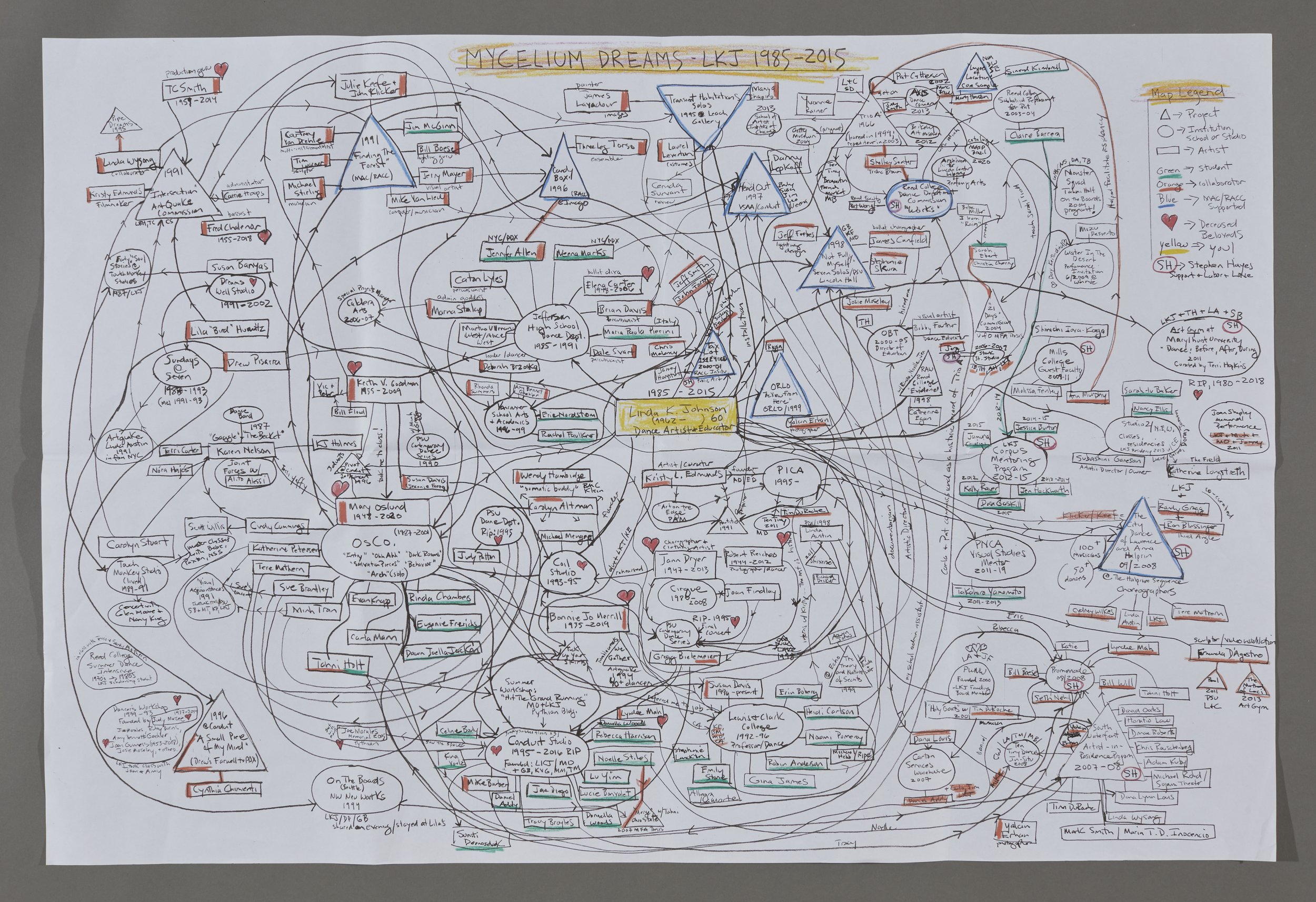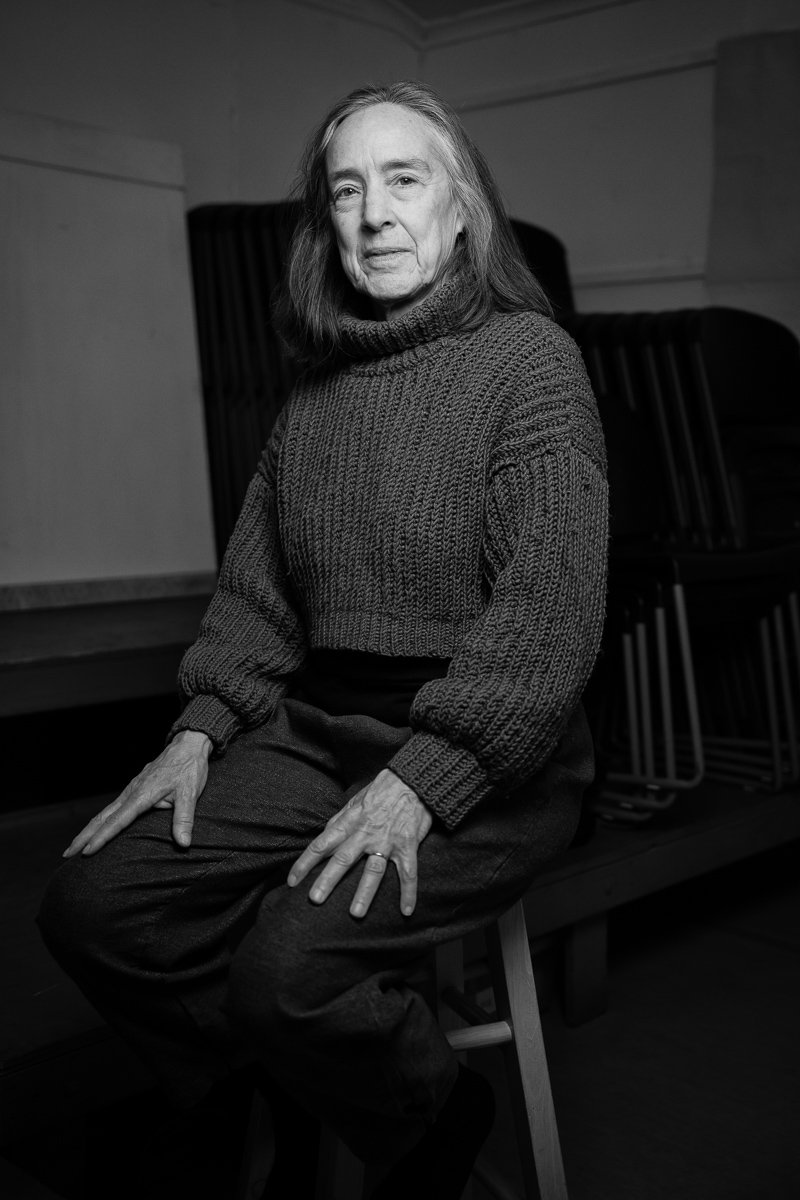Ongoing Weekly Contemporary Dance Class for intermediate-level dancers - Class is on a pause until August 8th
LongLife Forms
- A class where time and material move at the speed of the mature, injured, recovering or otherwise temperate body
LongLife Forms builds on my 40 years of embodied research about the intelligent, sensitive, porous and powerful dancing body. The next iteration of my teaching practice, this intermediate-level class honors and makes space for the body we have at this moment in time - for its ‘current weather’ to be a palette to be seen, worked with, and expressed. Studies of yoga (Diane Wilson), FELDENKRAIS METHOD (Lila Hurwtiz), BodyMind Centering (Wendy Hambidge + many), Alexander Technique (Shelley Senter, Robyn Avalon + many), CI (Karen Nelson, Alito Alessi, Steve Paxton, KJ Holmes), real-time improvisation (Danny Lepkoff), Wild Goose qi gong (Margit Galanter), and formal dance techniques (ballet - so many, Inga Weiss/Wigman, Bebe Miller, Mary Oslund, Yvonne Rainer, Betty Jones, +++) will variously inform our approaches to practice and play.
This class assumes contemporary, post-Judson dance technique experience. While not overtly a technique class, it is a forum to use what we know after years of study and practice to play with our almost unnameable and innumerable sets of tools. We will practice forms, we will improvise, we will consider our anatomy, we will touch and be touched, we will be in community. We will breathe, sweat, and get a little lost in that feeling of moving with clarity and consciousness in the body that you show up with.
Fridays@ FLOCK; Class is on a summer pause until August 8th.
9:30-11:15a; door at 9:15a; 2516 NW 29th Avenue, Portland
Drop-in; $20 (mutable if needed)
For more information - lkjdance@earthlink.net
And….
The Mycelium Dreams PASTfuture Long-Form Archival Conversation series with Portland’s dance elders starts up again with a monthly forum beginning in January/2025
Design: Jeff Smith
About the evolution of the Mycelium Dreams Project & PASTfuture
Mycelium Dreams is an ongoing, durational dance cartography, interview and embodied archiving project that I initiated in 2021 for the occasion of my 60th birthday. After four decades of creating, performing, teaching, mentoring and generally advocating for dance in the Portland community, I wanted to manifest a way to witness how I had spent the first 40 years of my professional creative life in the region. I needed a way to sense where I had been in order to feel where I could go. Inspired by my reading of biologist Suzanne Simard’s work on forest ecosystems that revealed with certainty the connection of all life through mycorrhizal networks, I spent three months mapping my lived experience of my own dance history.
As I stepped back to view this interconnected, looping 24”x36” drawing of people, projects, and relationships, what began as a personal history project quickly revealed itself to be gratitude project. If wealth was measured in relationships, collaborative unions, or embodied twining, dance artists were the wealthiest people on the planet. It occurred to me that other dance colleagues might value this reflective time in their own history so, in an act of community building, each living individual on my map was sent the materials and invitation to make his/her/their own map. We then gathered together on a frigid night in February/2022 as part of my Building5 residency to share them with each other. Still deep in the heart of the pandemic, 55 maps resulted from this masked and distanced gathering. Here are a few examples.













Viewed publicly at Bldg5 the following evening, the responses from both those viewing the maps as well as those who had made maps was so surprisingly positive and generative that I realized that this was indeed its own unique form of historical record keeping and thus artist-driven archiving. I really liked witnessing artists in full control of how their own story - relationships, connections, projects, collaborations, etc…was represented, albeit two-dimensionally. It was at this time in 2022 that the larger container of the Mycelium Dreams Project was imagined and activated. Archival in intention, the Mycelium Dreams Project is committed to foregrounding the voice of the dance artist or professional in remembering, telling, revealing, and mapping their own history. Since what is remembered lives, it makes sense to defer to the artist or those who worked intimately with them to have definitive authority over their story.
If you would like materials to create your map, please contact me here. All maps will ultimately live in the PSU Dance Archive to be available for research and viewing. It takes many voices and perspectives to tell the full story of any community.
Initial Thoughts on Embodied Archiving
The surprising blossoming of this project simultaneous with my own maturation in the field - both in terms of age and skill, has nudged me into an increasingly deeper reflection about both the ephemeral and embodied nature of dancemaking and teaching, and thus the nature of legacy and archiving in a field where what is created or taught is, by great measure held, in the body - the cells, of the audience member, the student, the dancer/performer, the bystander. I began to get very curious about the notion of ‘embodied archiving’, and what forms or forums were already existent as examples that took as foundational this embodied nature of the practice itself. What processes had they developed to honor this embodied transfer of knowledge? My previous experience is that much of the history of archiving in dance focuses either on the preservation of choreographic works - which is of course vital but assumes that things can be ‘reconstructed’, or dance biographies. What about the transfer of other kinds of embodied knowledge that artists and dance professionals have amassed - pedagogies, composition methods, somatic systems, philosophies, and ways of knowing? How are these valued and shared? These are vital aspects of remembering and preserving an individual’s complete body of work, as not all who deeply contribute to the vitality of a dance community are necessarily choreographers.
I was very inspired to find and witness several examples of this kind of ‘embodied archiving’ and I encourage you to explore them thru these links. The most recent is Danspace Project’s (NYC) annual forum called Platform. Now over a decade old, each year Danspace invites a dance artist to curate a series of performances, gatherings, lectures - whatever they would like, around a question or idea. This year’s curator was Kyle Abraham, artistic director of A.I.M., and he created a multi-tiered platform of intergenerational performances, conversations and master classes that will all be documented in a catalogue. I attended the final weekend of conversations, classes and performances this past June. The second example is from choreographer Bebe Miller, known for her personal and highly physical methods of creating. In 2012, she brought to audiences A History, a deeply reflective collaborative work about the lineage and continuation of her own creative practice. A quote form her website about the work, “ultimately shifting the paradigm of an artist’s archive from artifact to artwork”. You can read about and see an excerpt here. And finally, locally, an example from one of the artists listed below who will open my conversations as part of PICA:TBA this year - Chisao Hata. In collaboration with other members of the Portland community associated with the Vanport floods and the WWII Japanese internment camp located at what is now the Portland Expo Center, she has co-created the Vanport Mosaic, an organization foregrounding many kinds of what it refers to as ‘Memory Activism’. It is a very inspiring effort and I encourage you to read about it here.
Motivated by witnessing these other very diverse processes and projects, it is the intention of the Mycelium Dreams Project to create, further and organize many kinds forums that engender the embodied transfer of knowledge of many kinds from: artists to their peers, to the next generation of makers and performers, and to audiences and scholars alike. Imaginings include long form public interviews with dance artists and professionals, class series in pedagogical lineages, video screenings+conversations with the choreographer and performers, durationally compressed ‘replays’ of works previously presented to highlight form and process, public interviews with audience members or casts of previously seen choreographies to capture the experience of seeing or performing works, etc…Stay tuned!
PASTfuture Interviews
The interview component of the Mycelium Dreams Project, PASTfuture, debuted in September/2024 as part of PICA’s TBA:2024. Over the two weekends of the festival, I was in conversation with esteemed Portland dance artists Susan Banyas, Robin Lane, and Joan Findlay. The PASTfuture interviews are intent on creating an inclusive, nonhierarchical oral record of the stories of dance artists and professionals in the Portland community who have committed their life’s work to the field of dance. The interviews will begin with Portland’s dance elders and continue through the generations. It is multi-year and potentially unending, suggesting a community-based method of remembering our history. Long-form in nature, these exchanges are intended to be extended conversations where the artist has the space and time to fully discuss their work, their methods, their history and their influences. Some will occur privately, some over the phone, and others in public forums, whatever suits the desires of the interviewee. Where possible, the artist or professional being interviewed will be invited to conduct those present in a short movement etude, somatic study, choreographic strategy, or all levels experience that serves to transmit some piece of distinct embodied knowledge from artist to those present, thus enabling the transfer of lived processes.
The first group of Portland dance artists and professionals to be interviewed in 2024-25 include: Susan Banyas, Julane Stites, CarolynStuart, Toshiko Namioka, Nancy Martino, Chisao Hata, Pat Wong, Mama Ruby Burns-Johnny, Vaunda Carter, James Canfield, Mary Folberg, Tracy Durbin, Luciana Proano, Bobby Fouther, Martha Ullman West, Joan Findlay, Cathy Evleshin, Gregg Bielemeier, Keith V. Martin, Judy Patton, Robin Lane, Melissa St. Clair, Linda Austin, Jamey Hampton, Jayanthi Raman, Barry Johnson, Mindy Aloff, Wendy Hambidge, Bill Boese, Jeff Forbes, Bruce Smith, Vincent Martinez-Grieco, Josie Moseley, Judith Catterall, Ray Terrill, Terry Brock, + . This list is fluid and represents an evolving collection. If you are interested in adding a name to this first collection, please be in touch with me here. All of the interviews will live in the Portland State University Dance Archive and be available to artist colleagues and public for listening and research. The PSU Dance Archive is a non-curated space where all professional dance artists are invited to contribute their work. Access to the archive can be found here: https://pdxscholar.library.pdx.edu/pda/
Summer 2025 Interview - Linda Austin!
The only Mycelium Dreams conversation this summer is with my dear friend and colleague of 25+ years, Linda Austin. I will be in conversation with Linda on Aug. 2nd at 3p as part of PerformanceWorksNW celebration of 25 years of creating space for the work of performance-based artists in our community. This conversation is just one small part of a 3-day, 25-hour consortium of events that are intended to both celebrate the history and raise resources for the future. While the Mycelium Dreams exchanges are normally free, this one is $10 in honor of the event. You can find all the information about the whole weekend and buy tickets here.
The PASTfuture interview portion of the Mycelium Dreams Project was partially funded by a 2023 C3 grant from the Regional Arts and Culture Council. Thank you RACC!
Gatherings are free and ADA accessible.



